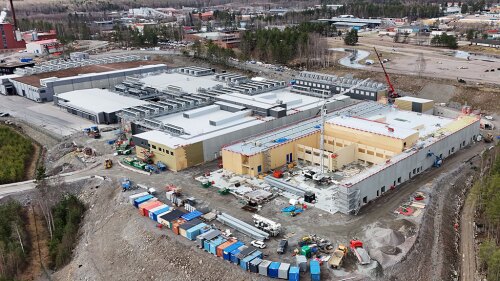Those in the U.S. real estate industry are all too familiar with the facts: buildings account for 80 percent of U.S. electricity consumption, 38 percent of all greenhouse gas emissions, and 39 percent of U.S. primary energy use. So it is no surprise that cities, states, and the federal government have targeted the real estate industry in an effort to curb energy consumption, greenhouse gas emissions, and dependence on fossil fuels.
Across the United States, buildings come in all shapes and sizes and just as many different types of ownership structures and users. Institutions such as pension funds and endowments hire advisers to acquire and manage large portfolios of real estate, sometime representing billions of dollars’ worth of real estate. The federal, state, and local governments all own and lease different types of space. Virtually everyone has rented an apartment or worked in an office building leased or owned by a corporation.
This diversity presents a challenge for all levels of government to encourage and motivate people to curb energy consumption and reduce buildings’ greenhouse gas emissions. Governments have many different arrows in their quiver, including creating a market mechanism that encourages investment in energy efficiency projects; passing legislation that requires the curbing of greenhouse gas emissions or the adoption of more energy efficiency building standards; providing tax breaks and monetary incentives to upgrade equipment and structures; and making capital available for energy efficiency studies and projects.
Energy Efficiency Rating Disclosure
Cities such as Seattle, New York City, the District of Columbia, and Austin all have adopted laws that require the disclosure of a building’s energy efficiency rating. The rating is based on a structure’s physical and operating characteristics, such as zip code, square footage, hours of operation, historical electric and fuel consumption, and other operating conditions. These collected data are submitted to the Energy Star Portfolio Manager website, created by the U.S. Environmental Protection Agency (EPA) and the Department of Energy (DOE). Each building’s energy consumption is compared against that of similar facilities and assigned a score from 1 to 100, with 100 being the most energy efficient. If a building has a rating of 75 or above, meaning that it is more efficient than 75 percent of the buildings in its class, it qualifies for the Energy Star label—a green building label similar to Leadership in Energy and Environmental Design (LEED) certification.
There are two types of disclosure requirements: private and public. In New York City, for example, building owners are required to submit the building’s energy efficiency ratings to the Department of Buildings on an annual basis, and the information is publicly available. In states like California and Washington, private, party-to-party disclosure is required between a buyer and seller, lessor and lessee, or lender and borrower.
The idea behind requiring energy efficiency disclosure is simple: disclosing the energy efficiency rating of a building will result in the market rewarding more efficient buildings by paying a sale or rental price premium. This will encourage owners to invest in projects that raise the energy efficiency rating of their buildings in order to capture the premium. The end result is a more energy-efficient building stock.
Candidly, in today’s weak U.S. real estate markets, it is difficult to find examples of premiums being paid for more energy-efficient buildings. Most institutional owners and lending organizations will not value or underwrite the rent premium for green properties, but there is evidence that they are taking this requirement seriously. Many are already using or plan on using the Energy Star Portfolio Manager to obtain ratings for their entire portfolio. They are doing so mainly because energy-efficient buildings are cheaper to operate, they want to promote their green brand to potential investors and tenants, and one day when the real estate market improves, they want to be first in line to capture the premiums.
Legislation
Much legislation, which many consider a negative incentive or “stick” to motivate change, has been passed around the country. These new laws include such approaches as requiring buildings to curb carbon emissions, mandating that federal tenants lease space in green buildings, and requiring new structures to adhere to higher and higher energy efficiency standards.
If this legislative trend were to have a poster child, it would be the California Global Warming Solutions Act of 2006, or Assembly Bill 32. This law mandates that California reduce its greenhouse gas (GHG) emissions to 1990 levels by 2020. Reducing the state’s GHG footprint to meet these goals will require an approximate 29 percent cut in emissions below the projected levels in 2020. A cap-and-trade system, which is part of the legislation, provides a market-based approach to control pollution by providing economic incentives for achieving reductions in the emissions of pollutants.
The Federal Energy Independence and Security Act of 2007 requires that total energy use in federal buildings, relative to the 2005 level, be reduced 30 percent by 2015. To accomplish this goal, federal energy managers are directed to conduct a comprehensive energy and water evaluation for each facility at least once every four years. New federal buildings and major renovations must employ the most energy-efficient designs, systems, equipment, and controls that are life-cycle cost effective. Federal agencies are required to lease buildings that have earned a green building label such as an EPA Energy Star label or LEED certification.
Also in California, the new version of California Buildings Standards Code Title 24, which went into effect on January 1, 2010, and is scheduled to be updated in January 2011, will incorporate new energy efficiency standards, technologies, and methods designed to considerably reduce the energy consumption of new buildings. It is estimated that new standards that will be created for the design and installation of such things as lighting, air conditioning, roofing, and insulation will save $23 billion in electricity and gas costs by 2013.
Rebates and Incentives
If legislation is the stick, then rebates, incentives, and tax credits are the “carrot” that states, utility providers, and the federal government are using to implement energy efficiency and renewable energy projects. Typically, building owners and managers make the decision to upgrade or replace building equipment either because it breaks down or because it is a good investment. Reducing the cost and decreasing the payback period of energy efficiency and renewable energy generation projects encourages building owners to implement these projects sooner. Federal tax credits for the implementation of renewable energy initiatives such as use of solar photovoltaic systems and other renewable energy technologies can account for 30 percent of the installation cost of the project.
The Energy Policy Act of 2005 has a provision to extend a tax deduction for energy-efficient commercial buildings applicable to qualifying systems and buildings placed in service from January 1, 2006, to 2013. A tax deduction of $1.80 per square foot is available to owners of new or existing buildings who install interior lighting, building envelope, or heating, cooling, ventilation, or hot water systems that reduce the building’s total energy and power cost by 50 percent or more in comparison with a building meeting minimum requirements set by ASHRAE Standard 90.1-2001.
Project financing has been one of the greatest obstacles to the broader implementation of energy efficiency projects, especially for those who have found themselves handcuffed by the frozen real estate capital markets. Under a new program launched by the U.S. Small Business Association (SBA), small to medium-sized real estate owners who implement an energy reduction or renewable energy generation project on new construction, building renovation, or acquisition may qualify for a loan of up to $5.5 million with no caps on how many SBA loans a borrower may have. The guidelines and intent of the new SBA 504 program and its new energy public policy goals are promising, and it has facilitated the financing of many projects that otherwise would not have happened.
Because the various sources, rebates, and incentives can vary greatly from state to state and even from block to block, a good source of information on rebates and incentives can be found at the Database of State Incentives for Renewable & Efficiency. The most accurate information on rebates and incentives for buildings can be obtained by contacting the local utility provider.
Free Energy Audits and Capital for Energy Efficiency Project Implementation
The goal of many government grants and programs is to invest in energy projects that create jobs. The DOE, the American Recovery and Reinvestment Act, and the Energy Efficiency and Conservation Block Grant Program provide capital for energy efficiency studies and energy efficiency projects.
Under the American Recovery and Reinvestment Act of 2009, the New Jersey Housing Mortgage and Financing Agency (NJ HMFA) was awarded a Weatherization Assistance Program grant with $30 million in funding. The NJ HMFA will provide financial assistance to make energy efficiency improvements to multifamily rental housing properties that have an existing first mortgage with the NJ HMFA. Energy efficiency consultants were hired to identify energy efficiency projects that demonstrate at least a 15 percent reduction in energy consumption and meet specific financial return criteria. The program paid for up to $5,000 per unit to implement the projects and, in many cases, the owners of the low-income multifamily facility did not have to spend any of their own money.
In southern California, a similar program was adopted to improve the energy and water efficiency of low-income multifamily buildings. Funds were awarded to building owners to conduct energy audits on their buildings to identify energy and water efficiency projects that reduce consumption by at least 20 percent. Based on the results of the energy audit and other criteria, the owners competed for funds from the DOE to implement the identified projects.
Those in the real estate industry most likely to benefit from the government’s actions will be those who know how to take full advantage of the positive incentives and minimize the risks of the negative ones.





